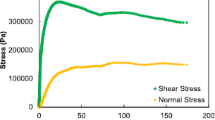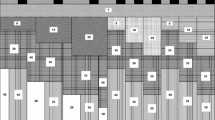Abstract
This paper documents the findings from the study of fatigue cracking mechanisms in asphalt pavements using the finite element program (VECD-FEP++) that employs the viscoelastic continuum damage model for the asphalt layer and a nonlinear elastic model for unbound layers. Both bottom-up and top-down cracks are investigated by taking several important variables into account, such as asphalt layer thickness, layer stiffness, pressure distribution under loading, and load level applied on the pavement surface. The cracking mechanisms in various pavement structures under different loading conditions are studied by monitoring a damage contour. Preferred conditions for top-down cracking were identified using the results from this parametric study. The conjoined damage contours in thicker pavements suggest that the through-the-thickness crack may develop as the bottom-up and top-down cracks propagate simultaneously and coalesce together, supporting observations from field cores and raising the question of the validity of traditional fatigue performance models that account for the growth of the bottom-up cracking only.
Similar content being viewed by others
References
Chehab, G.R., Kim, Y.R., Schapery, R.A., Witezak, M.W., and Bonaquist, R. (2002). “Time-temperature superposition principle for asphalt concrete mixtures with growing damage in tension.”Journal of Association of Asphalt Paving Technologists, Vol. 71, pp. 559–593.
Daniel, J.S. and Kim, Y.R. (2002). “Development of a simplified fatigue test and analysis procedure using a viscoelastic continuum damage model.”Journal of Association of Asphalt Paving Technologists, Vol. 71, pp. 619–650.
Garg, N. and Thompson, M.R. (1998)Mechanistic-Empirical Evaluation of the Mn/ROAD Low Volume Road Test Sections, Illinois Cooperative Highway and Transportation Research Program Report FHWA-IL-UI-262, Urbana, IL.
Gerritsen, A.H., Van Gurp, C.A.P.M., Van der Heide, J.P.J., Molenaar, A.A.A., and Pronk, A.C. (1987). “Prediction and prevention of surface cracking in asphalt pavements.”6 th International Conference on Structural Design and Asphalt Pavements, The University of Michigan, Ann Arbor, MI, pp. 378–391.
Guddati, M.N. (2001)FEP ++:A Finite Element Program in C ++, Input Manual, Department of Civil Engineering, North Carolina State University.
Groenendijk, J., Vogelzang, C.H., Molenaar, A.A.A., Mante, B.R. and Dohmen, L.J.M. (1997). “Linear tracking response measurements: determining effects of wheel-load configurations.”Transportation Research Record 1570, TRB, National Research Council, Washington, D.C., pp. 1–9.
Jenq, Y.S., and Perng, J.D. (1991). “Analysis of crack propagation in asphalt concrete using cohesive crack model.”Transportation Research Record 1317, TRB, National Research Council, Washington, D.C., pp. 90–99.
Jenq, Y.S., Liaw, C.J., and Liu, P. (1993). “Analysis of crack resistance of asphalt concrete overlays—A fracture mechanics approach.”Transportation Research Record 1388, TRB, National Research Council, Washington, D.C., pp. 160–166.
Kim, Y.R., Lee, H.J., and Little, D.N. (1997). “Fatigue characterization of asphalt concrete using viscoelasticity and continuum damage theory.”Journal of the Association of Asphalt Paving Technologists, Vol. 66, pp. 520–569.
Miradi, A., Groenendijk, J., and Dohmen, L.J.M. (1997). “Crack development in linear tracking test pavements from visual survey to pixel analysis.”Transportation Research Record 1570, TRB, National Research Council, Washington, D.C., pp. 48–54.
Mun, S. (2003).Nonlinear Finite Element Analysis of Pavements and Its Application to Performance Evaluation. Ph.D. Dissertation, Department of Civil Engineering, North Carolina State University, 2003.
Myers, L.A., Roque, R., and Birgisson, B. (2001). “Propagation mechanisms for surface-initiated longitudinal wheel path cracks.”Transportation Research Record 1778, TRB, National Research Council, Washington, D.C., pp. 113–122.
Santha, B.L. (1994). “Resilient modulus of subgrade soils: Comparison of two constitutive equations.”Transportation Research Board 1462, TRB, National Research Council, Washington D.C., pp. 79–90.
Sebaaly, P.E. (1992).Dynamic Forces on Pavements: Summary of Tire Testing Data. Report on FHWA Project DTFH 61-90-C-00084.
Sebaaly, P.E. and Tabatabaee, N. (1993). “Influence of vehicle speed on dynamic loads and pavement response.”Transportation Research Board 1410, TRB, National Research Council, Washington D.C., pp. 107–114.
Siddharthan, R.V., Krishnamenon, N., El-Mously, M., and Sebaaly, P.E. (2002). “Investigation of tire contact stress distributions on pavement response.”Journal of Transportation Engineering, Vol. 128, No. 2, ASCE, pp. 136–144.
Author information
Authors and Affiliations
Corresponding author
Rights and permissions
About this article
Cite this article
Mun, S., Guddati, M.N. & Kim, Y.R. Viscoelastic continuum damage finite element modeling of asphalt pavements for fatigue cracking evaluation. KSCE J Civ Eng 10, 97–104 (2006). https://doi.org/10.1007/BF02823927
Received:
Accepted:
Issue Date:
DOI: https://doi.org/10.1007/BF02823927




